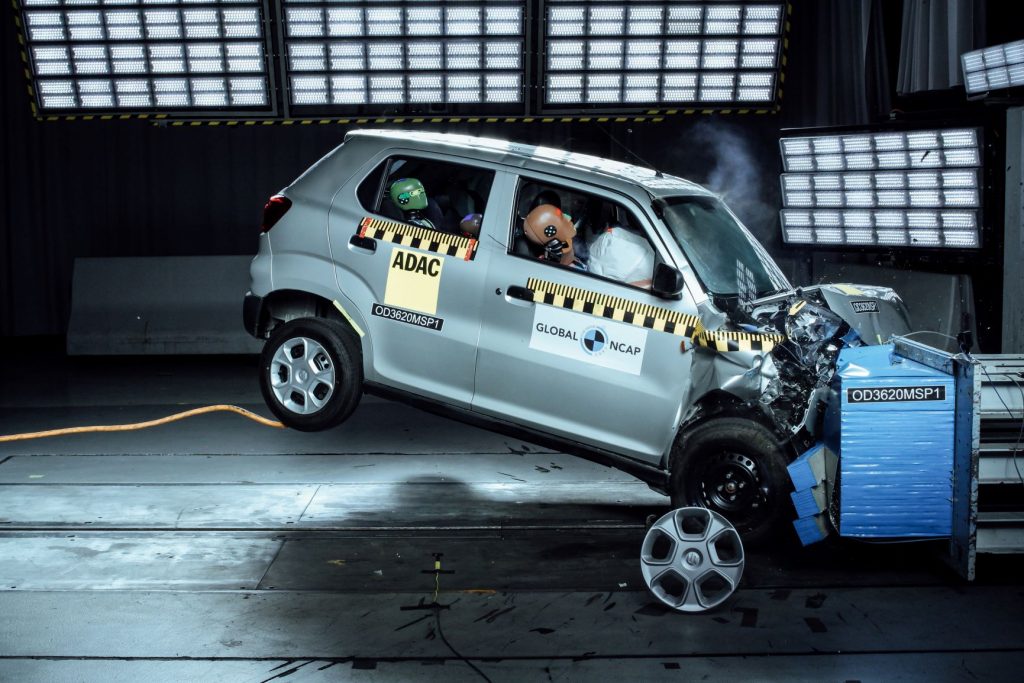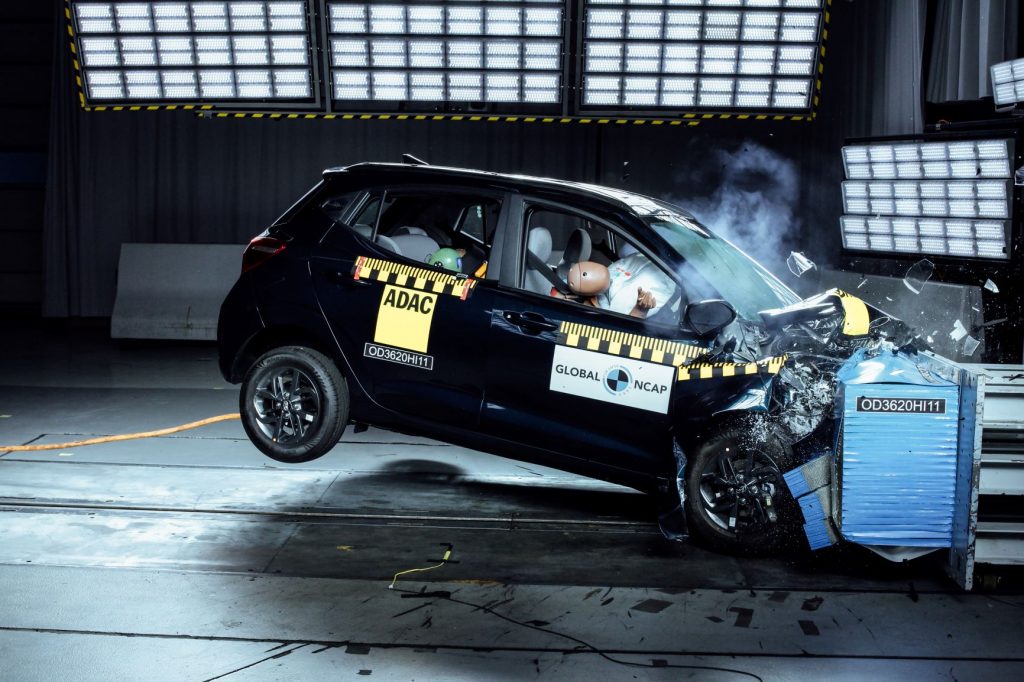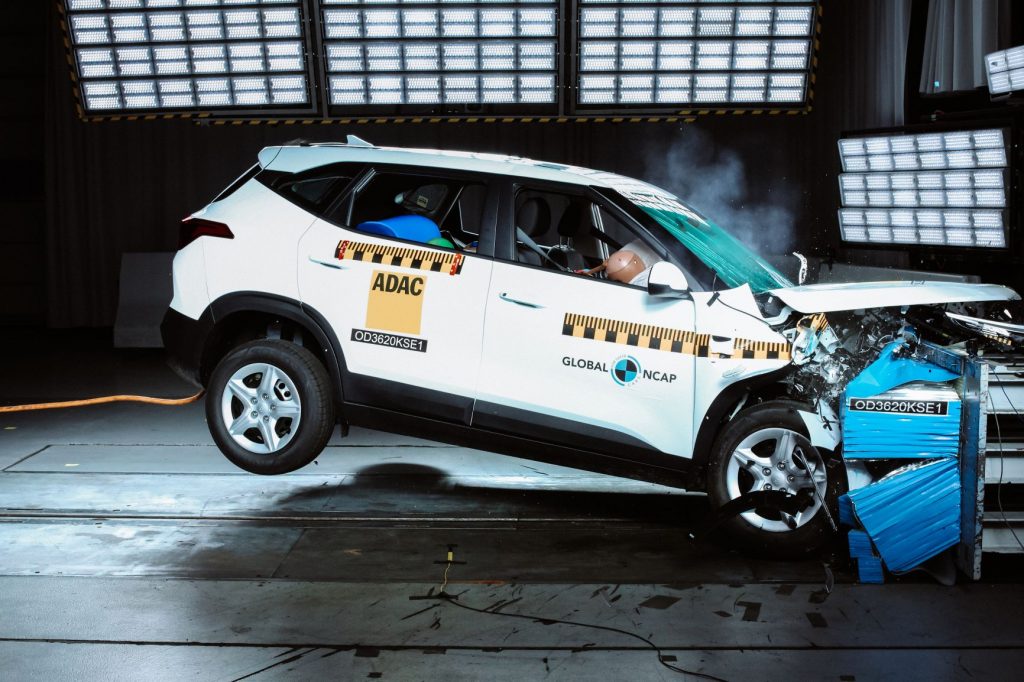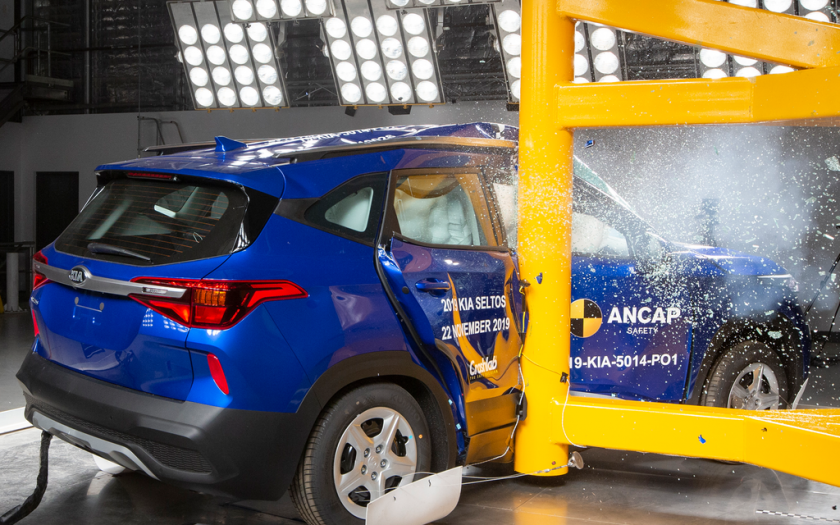INDIA PROBABLY HAS SOME OF the cheapest cars on their home market, but some significant compromises must be made to meet the low entry prices. And scrimping on safety features may help explain why India had 290,000 deaths on its roads (Australia 1146), 22.6 deaths per 100,000 population (Australia 5.6), or 130 per 100,000 motor vehicles (Australia: 7.4). (2018 figures, World Health Organisation)
Meanwhile, ANCAP continues to test local vehicles and award them a star rating out of five. We should be glad they’re looking out for our interests.
The Maruti Suzuki S-Presso was tested by ANCAP’s international equivalent, Global NCAP and scored a far from impressive zero-star rating. That’s right … no stars at all!
In all, Global NCAP tested three different models, the Maruti Suzuki S-Presso, Hyundai Grand i10 Nios and Kia Seltos, as sold on the Indian market. Global NCAP chose the entry-level version of each model. The S-Presso was only fitted with a driver airbag as standard, while the other models offered both driver and passenger airbags as standard.
The range of results, from zero to three stars, highlights significant differences in adult occupant protection even in cars that meet minimum regulatory standards, and shows how our local testing results in safer cars for Australian buyers.
Alejandro Furas, Secretary General of Global NCAP said, “It is very disappointing that Maruti Suzuki, the manufacturer with the largest share of the Indian market, offers such low safety performance for Indian consumers. Domestic manufacturers like Mahindra and Tata have demonstrated high levels of safety and protection for their customers, both achieving five-star performance. Surely it’s time for Maruti Suzuki to demonstrate this commitment to safety for its customers?”
David Ward, President of the Towards Zero Foundation said, “We have seen important progress on car safety in India, with new legislation introduced by the government and manufacturers like Mahindra and Tata accepting the Global NCAP five-star challenge and producing models which go well beyond minimum regulatory requirements. There is no place for zero rated cars in the Indian market. It remains a great disappointment that an important manufacturer like Maruti Suzuki does not recognise this.”

Maruti Suzuki S-Presso (not sold in Australia)
The S-Presso achieved zero stars for adult occupant protection and two stars for child occupant protection. The S-Presso offers only driver airbag as standard. The high readings in the passenger neck explain the zero-star result. However, chest loadings in both front passengers were high and in more updated protocols could also lead to a zero-star chest rating for this reason as well. Its structure was rated as unstable and should be improved. Its footwell area was rated as unstable as well. Child occupant protection showed poor results for both child dummies in the dynamic test explained by the poor performance of the restraint systems. The car does not offer three-point belts in all positions as standard and has no ISOFIX anchorages for the Child Restraint Systems (CRS).
The Maruti Suzuki S-Presso is not sold in Australia.

Hyundai Grand i10 NIOS (not sold in Australia)
The Grand i10 Nios achieved two stars for adult occupant protection and two stars for child occupant protection. The Grand i10 Nios offers double frontal airbags and pretensioners for both front passengers as standard. Its structure was rated as unstable. Its footwell area was rated as unstable. Head and neck protection for adult occupants was good. Chest protection was weak for the driver and adequate for the passenger leading to limitation of the Seat belt reminder (SBR) points having standard SBR for front passengers. Child occupant protection showed poor results mainly explained by the decision of the car manufacturer not to recommend the CRSs for the test. Global NCAP is of the opinion that car manufacturers are responsible for all the occupants and child occupants are frequent passengers. Refusing to recommend a CRS for the test raises questions about the car manufacturer policy and relevance towards child occupant protection for the Indian market. The three-year-old dummy showed poor protection for the head due to excessive forward excursion of the head during the crash and a limited chest protection. The 18-month-old showed better protection. The car does not offer standard three-point belts in all seating positions and does not offer standard ISOFIX anchorages.
The Hyundai Grand i10 is not sold in Australia.

Kia Seltos (version sold in Australia has 5-star ANCAP rating)
And here’s why local testing and certification is important.
The Seltos selling in India achieved three stars for adult occupant protection and two stars for child occupant protection. Significantly, the local version of the Kia Seltos scored the maximum five stars for all variants, in all four key areas of assessment. Higher specification variants offer the added reassurance of advanced collision avoidance capability.
ANCAP chief executive James Goodwin praised car manufacturers, saying, “We’ve seen some impressive results this year and consumers should be encouraged by the high standards the majority of vehicle brands continue to achieve.”
Referring specifically to the Seltos, Mr Goodwin noted that consumers should be aware that there are some differences in safety performance for the entry-level Seltos variants. “Base models of the Seltos miss out on some of the more advanced features with the radar-fusion AEB system,” he said, “and we would encourage consumers to purchase a variant which offers the enhanced collision avoidance capability as this can translate to real differences on the road.”
The Kia Seltos sold in Australia differs significantly from the Seltos sold in India.
Now, before you make your mind up to never buy an Indian vehicle, it is worth noting that the Indian-built Mahindra XUV500 scored four ANCAP stars when tested in 2012 while the Pik-Up dual cab ute managed three stars and the only other Indian-built car sold in Australia, the Tata Xenon scored four stars when tested in 2013. Not brilliant, but a big improvement on the Indian market models.
Something else you should be aware of is that the Hyundai i20 hatchback (sold in Australia from 2011 to 2016, five ANCAP stars) and Suzuki Alto (sold in Australia from 2009 to 2015, four ANCAP stars) were Indian-built.
And finally, understand that the increasing requirements of ANCAP testing each year means that these cars, tested some years ago, would almost certainly not score as highly today.
